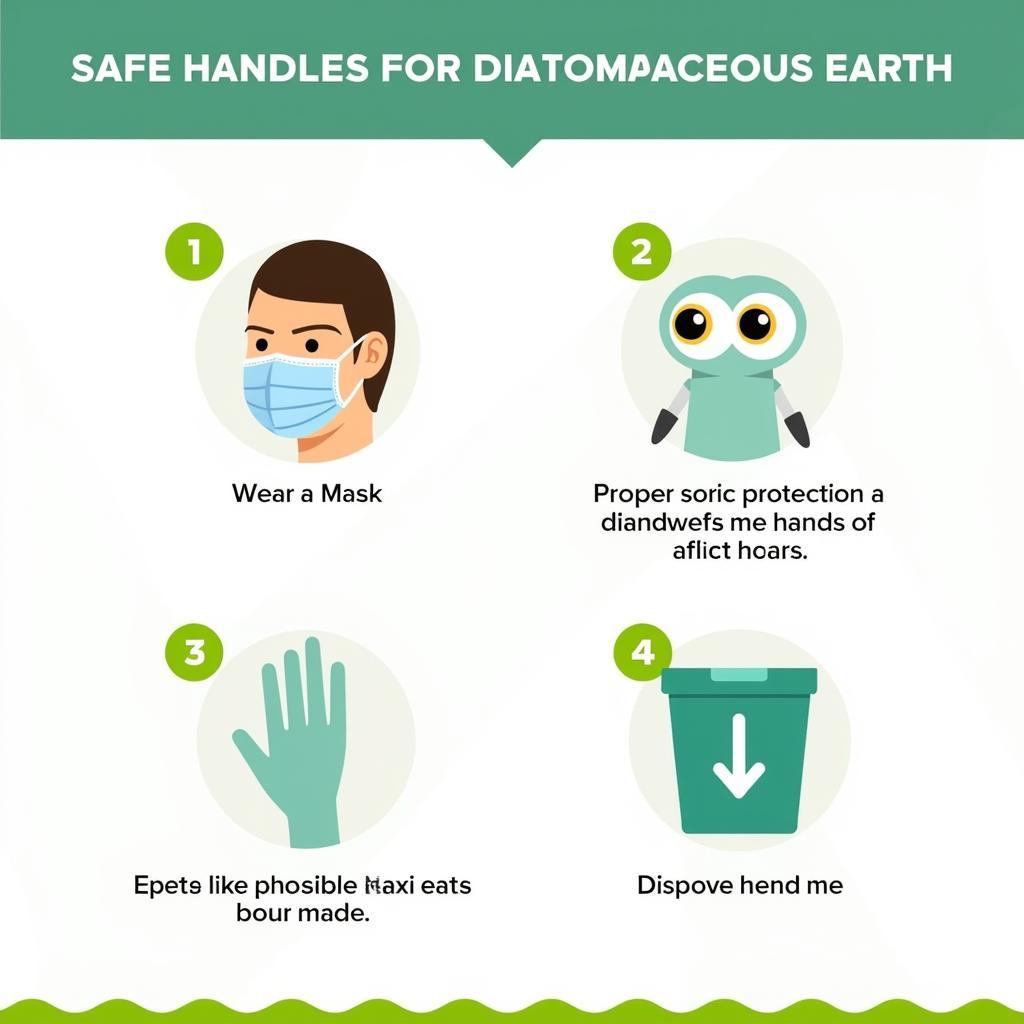Diatomaceous Earth Food Grade Vs Non Food Grade is a crucial distinction for anyone considering using this versatile substance. While both forms are derived from fossilized algae called diatoms, their purity and applications differ significantly. Understanding these differences is essential for safe and effective use, especially when it comes to food and health.
Understanding the key differences between food grade and non food grade diatomaceous earth is paramount for safe usage. Food grade diatomaceous earth is meticulously processed to meet strict purity standards set by regulatory bodies. This ensures it’s safe for human consumption and internal use. Non-food grade, however, contains higher levels of crystalline silica, making it unsuitable for ingestion and primarily used for industrial applications like filtration and insecticide. Choosing the right grade depends entirely on its intended purpose. You can find more information about food grade metals here: food grade metals.
What is Diatomaceous Earth?
Diatomaceous earth, whether food grade or not, originates from the fossilized remains of tiny aquatic organisms called diatoms. These diatoms have skeletal structures made of silica, which accumulate over time, forming sedimentary deposits. The resulting substance, diatomaceous earth, is a fine, white powder with remarkable properties. Its microscopic structure, full of tiny pores, lends itself to various applications, from filtration and absorption to pest control.
Diatomaceous Earth Food Grade vs. Non Food Grade: Key Differences
The primary difference lies in the level of crystalline silica. Food grade diatomaceous earth contains less than 1% crystalline silica, making it safe for consumption. Non-food grade diatomaceous earth can contain up to 70% crystalline silica, which is a known respiratory hazard when inhaled. Choosing the correct type is crucial for both efficacy and safety.
Why is Crystalline Silica a Concern?
Crystalline silica, in its respirable form, can cause serious lung damage if inhaled in large quantities over a prolonged period. This is why non-food grade diatomaceous earth is not suitable for applications where inhalation is a risk.
 Diatomaceous Earth Food Grade vs Non Food Grade Comparison Table
Diatomaceous Earth Food Grade vs Non Food Grade Comparison Table
Uses of Food Grade Diatomaceous Earth
Food grade diatomaceous earth is often used as a supplement for its potential health benefits. Some proponents claim it can aid digestion, support detoxification, and improve skin and hair health. It’s also used as an anti-caking agent in various food products. For a deeper dive into the differences between food grade diatomaceous earth and insect killers, see our article on diatomaceous earth food grade vs insect killer.
Is Food Grade Diatomaceous Earth Safe?
When consumed in recommended dosages, food grade diatomaceous earth is generally considered safe. However, excessive intake can lead to dehydration due to its absorbent properties. It’s crucial to drink plenty of water when using diatomaceous earth internally.
Uses of Non Food Grade Diatomaceous Earth
Non-food grade diatomaceous earth is commonly used as an insecticide. Its microscopic structure damages the exoskeletons of insects, leading to dehydration and death. It’s also used in filtration systems, especially for swimming pools, due to its excellent filtering capabilities.
Safety Precautions for Non Food Grade Diatomaceous Earth
Always wear a mask when handling non-food grade diatomaceous earth to avoid inhaling the dust. Avoid contact with skin and eyes, and store it in a sealed container away from children and pets. Looking for further clarification? Check out our resource on diatomaceous earth food grade vs not.
 Safe Handling Practices for Diatomaceous Earth
Safe Handling Practices for Diatomaceous Earth
Which Type of Diatomaceous Earth Do I Need?
The choice depends entirely on your intended use. For any internal application or consumption, always choose food grade diatomaceous earth. For pest control, filtration, or other non-consumable applications, non-food grade diatomaceous earth is suitable.
What are the Common Misconceptions about Diatomaceous Earth?
One common misconception is that all diatomaceous earth is the same. This is untrue, as the grade significantly impacts its safety profile. Another misconception is that food grade diatomaceous earth is a miracle cure, which is not supported by substantial scientific evidence.
“Understanding the different grades of diatomaceous earth is essential,” says Dr. Emily Carter, a leading toxicologist. “Using the wrong grade can have serious health consequences. Always choose food grade for internal use.”
Conclusion
Diatomaceous earth food grade vs non food grade is a critical distinction to make. Always prioritize food grade for internal consumption and non-food grade for external applications. Understanding the differences ensures both safety and efficacy.
FAQ
- Can I use non-food grade diatomaceous earth in my garden? Yes, but avoid inhaling the dust.
- Is food grade diatomaceous earth effective for pest control? Yes, for certain types of insects.
- Where can I buy food grade diatomaceous earth? Health food stores and online retailers.
- How much food grade diatomaceous earth should I consume? Consult a healthcare professional for personalized advice.
- Can diatomaceous earth harm pets? Non-food grade can be harmful if inhaled.
- Does diatomaceous earth kill all insects? It’s effective against insects with exoskeletons.
- What is the shelf life of diatomaceous earth? Indefinite if stored properly in a dry place.
For further support, contact us at Phone Number: 02437655121, Email: [email protected], or visit us at 3PGH+8R9, ĐT70A, thôn Trung, Bắc Từ Liêm, Hà Nội, Việt Nam. Our customer service team is available 24/7.